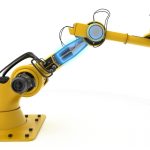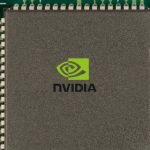In a significant advancement in vehicle automation technology, Tesla has initiated the rollout of its latest Full Self-Driving (Supervised) software, version 12.3.5. This new update, part of the software package 2024.3.20, represents a crucial step as Tesla continues to refine its autonomous driving capabilities. The software deployment isn’t just an update but marks the transition from manually coded driving functions to a system governed entirely by neural network-based decision-making. This shift is expected to enhance the reliability and safety of auto-piloted trips, making a clear stride towards fully autonomous vehicles.
Evolution of Tesla’s FSD Technology
The journey of Tesla’s Full Self-Driving software has been marked by continuous refinement. The transition to the supervised version from a beta label underscores Tesla’s confidence in its neural network’s capability to handle real-world driving scenarios more effectively than traditional code-based approaches. Version 12 of the FSD software started rolling out to employees as early as November and has since undergone rigorous testing to assure its performance and safety. The recent updates are noted for removing over 300,000 lines of traditional code, shifting entirely to neural network control, a technology trained with millions of video frames captured during actual driving conditions.
Strategic Pricing Adjustments
Recently, Tesla has made strategic adjustments to the pricing model of the FSD software. The company has reduced the subscription costs by half and lowered the prices for one-time purchases of the FSD add-on. These pricing strategies likely aim to make the technology accessible to a broader range of customers, potentially increasing its adoption rate. Additionally, Tesla introduced a one-month free trial of the FSD software for existing customers, catalyzing user engagement and feedback, which are critical to the software’s ongoing improvement.
Complementary Developments
In related news, Elon Musk announced plans for a Tesla robotaxi platform to be unveiled in August, alongside a milestone of one billion cumulative miles driven by the FSD fleet. This indicates a broader strategy to expand its autonomous technology into new business verticals. The anticipation around these developments is palpable, as evidenced in the upcoming Q1 earnings call, where investors are keen to understand the financial implications and the timeline for the revenue-generating aspects of Tesla’s FSD technology.
Further insights can be drawn from an article titled “Tesla’s Strategic Move to Boost FSD Adoption” by Auto Innovate and another named “The Road to Autonomous Vehicles” by Future Car News. Both articles emphasize the competitive landscape of autonomous driving technologies and Tesla’s aggressive approach to market penetration and consumer adoption. They highlight the potential of reduced pricing to disrupt the market while underscoring the challenges of widespread adoption due to safety and regulatory concerns.
Additionally, a recent study published in the Journal of Automotive Technology, titled “Neural Networks in Autonomous Driving: Applications and Challenges,” provides an academic perspective on the advancements Tesla is implementing. The study underscores the importance of extensive real-world data and advanced neural network algorithms in achieving significant milestones in autonomous vehicle technology.
Key Takeaways
- Neural network transition could reduce error margins in auto-piloting.
- Pricing adjustments likely to broaden consumer base for FSD technology.
- Free trials and strategic rollouts may enhance user feedback loops.
Tesla’s continuous updates to its FSD software, including the latest 12.3.5 version, coupled with strategic pricing adjustments, exemplify its commitment to advancing autonomous driving technology. While the company gears up for the introduction of its robotaxi platform, the broader implications for the automotive industry and regulatory landscape remain a topic of keen interest. As Tesla forges ahead, the integration of advanced neural networks in FSD highlights a pivotal shift towards more sophisticated and reliable autonomous driving solutions, potentially setting new industry standards.










